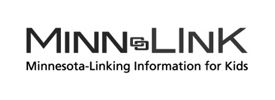Integrated Data: Commentaries & Reports
Linked administrative records provide a rich resource for data-driven policy and program decisions. Yet, integrating data from different public agencies also presents ethical, political, operational, and scientific challenges. Understanding potential hurdles, sharing best practices, and developing a knowledge base can help us to realize the vast potential data linkage holds for improving outcomes for children and families.
Record Linkage: Technical Documents
Historically, administrative data were maintained as paper records and their utility for purposes of research and evaluation were limited. Paper records were burdensome to compile, expensive to share, and had many clerical errors. Technological advances in computing, however, now make administrative records an increasingly valuable source of data for research.
Linked Analyses: Research Examples
The inability to cross agency data “silos” has long undermined efforts to evaluate the collective size and impact of program investments, and has restricted assessments of population needs that would allow for resources to be strategically (and equitably) allocated. Yet, increasingly, linked data are advancing our understanding of child population dynamics, allowing us to connect the dots for children over time and across service systems.
Data Resources
Data and information are key to improving the well-being of children and youth, families, and communities. The following projects are among our favorite for their use of data for research and evaluation, program and policy development, and advocacy.
“An investment in knowledge pays the best interest.”

1150 South Olive Street, Suite 1400
Los Angeles, CA 90015
Los Angeles, CA 90015
General Questions
Connect
Newsletter
Sign up for our mailing list to stay up to date with the Children's Data Network's latest research and news developments.
©2020 Datanetwork.org
#


















